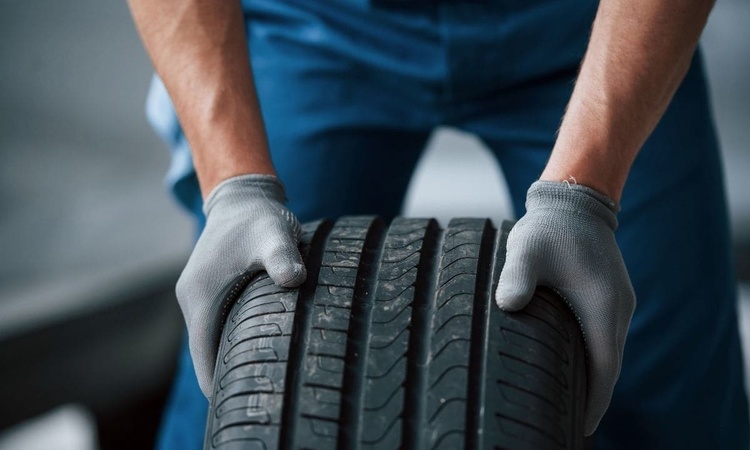Fleet Tire Management in High-Temperature Environments
Managing fleet tires in extreme heat conditions requires specialized knowledge and strategic planning. High-temperature environments, particularly common in regions like Saudi Arabia, present unique challenges for commercial vehicle operations. From accelerated wear patterns to increased blowout risks, fleet managers must understand how heat affects tire performance and implement comprehensive management strategies. This guide explores essential practices for maintaining tire safety, optimizing performance, and controlling costs in demanding thermal conditions.

Operating commercial vehicles in high-temperature environments demands a comprehensive understanding of tire behavior under extreme thermal stress. Fleet managers in hot climates face accelerated tire degradation, increased maintenance costs, and heightened safety risks that require proactive management strategies.
Choosing the Right Truck Tires for Hot Climates
Selecting appropriate tires for high-temperature operations involves evaluating heat-resistant compounds and construction designs. Premium truck tires designed for hot climates feature specialized rubber compounds that maintain flexibility and structural integrity at elevated temperatures. Heat-resistant sidewall construction prevents premature cracking and separation, while advanced tread designs promote better heat dissipation through improved air circulation.
Load rating considerations become critical in hot environments, as tire capacity decreases with temperature increases. Fleet managers should consider selecting tires with higher load ratings than minimum requirements to compensate for thermal stress effects. Additionally, choosing tires with lower rolling resistance can reduce heat generation during operation, extending tire life and improving fuel efficiency.
How Truck Tires Wear in Extreme Heat Conditions
Heat accelerates chemical reactions within tire compounds, leading to faster oxidation and rubber degradation. In high-temperature environments, tires experience increased tread wear rates, particularly on the shoulder areas where heat concentration is highest. The combination of hot pavement and ambient temperatures creates thermal cycling that weakens tire structure over time.
Uneven wear patterns become more pronounced in hot climates due to thermal expansion and contraction cycles. Center wear often increases as tire pressure rises with temperature, while edge wear may result from reduced tire flexibility in extreme heat. Understanding these wear patterns helps fleet managers adjust maintenance schedules and rotation practices to maximize tire life.
Ozone exposure, more prevalent in hot, sunny climates, causes sidewall cracking and premature aging. This environmental factor, combined with UV radiation, significantly reduces tire lifespan compared to moderate climate operations.
Truck Tire Safety Tips for High-Temperature Operations
Maintaining proper tire pressure becomes crucial in hot environments, as underinflated tires generate excessive heat through increased flexing. Fleet managers should implement more frequent pressure checks, ideally when tires are cool, and adjust pressures according to manufacturer recommendations for high-temperature operations. Installing tire pressure monitoring systems provides real-time alerts for pressure deviations that could lead to dangerous blowouts.
Regular visual inspections should focus on heat-related damage indicators, including sidewall bulges, tread separation, and irregular wear patterns. Establishing inspection protocols that account for thermal stress helps identify potential failures before they become safety hazards.
Speed management plays a vital role in tire safety during hot weather operations. Reducing highway speeds by even 5-10 mph can significantly decrease tire operating temperatures and extend tire life. Implementing speed policies for extreme temperature days protects both equipment and personnel.
| Tire Brand | Heat Rating | Estimated Cost per Tire | Key Features |
|---|---|---|---|
| Michelin X Multi Energy Z | A | $450-600 | Heat-resistant compound, fuel efficient |
| Bridgestone M788 | A | $400-550 | Enhanced sidewall protection, long mileage |
| Continental HSR2 | B+ | $380-520 | Advanced heat dissipation, retreadable |
| Goodyear G647 RSS | A- | $420-580 | Superior heat resistance, all-position use |
| Pirelli TH:01 | A | $460-620 | Optimized for hot climates, low rolling resistance |
Prices, rates, or cost estimates mentioned in this article are based on the latest available information but may change over time. Independent research is advised before making financial decisions.
Implementing comprehensive tire management programs specifically designed for high-temperature environments requires balancing performance, safety, and cost considerations. Regular monitoring of tire temperatures using infrared thermometers helps identify potential problems before they escalate. Establishing relationships with local tire service providers ensures rapid response capabilities for emergency situations.
Proper storage of spare tires becomes critical in hot climates, as prolonged exposure to extreme temperatures can degrade unused inventory. Climate-controlled storage facilities or protective covers help preserve tire quality and extend shelf life.
Fleet tire management in high-temperature environments demands proactive strategies that address the unique challenges of extreme heat. By selecting appropriate tires, understanding heat-related wear patterns, and implementing comprehensive safety protocols, fleet managers can maintain operational efficiency while protecting their investment. Regular monitoring, proper maintenance, and strategic planning create the foundation for successful tire management in demanding thermal conditions.




